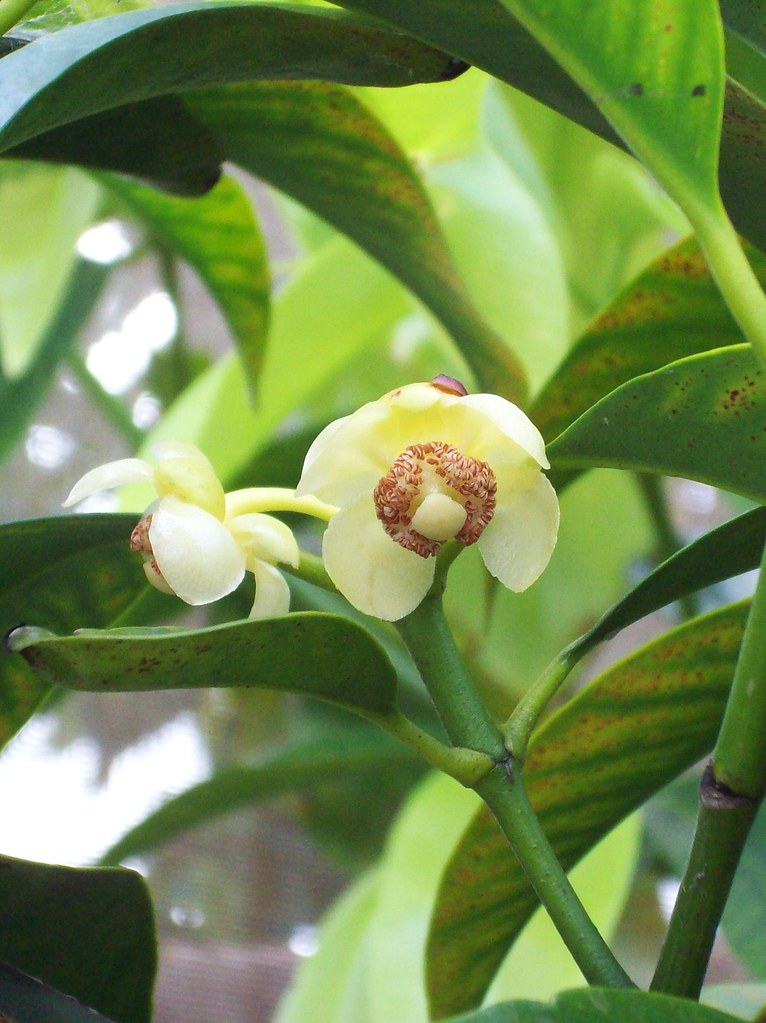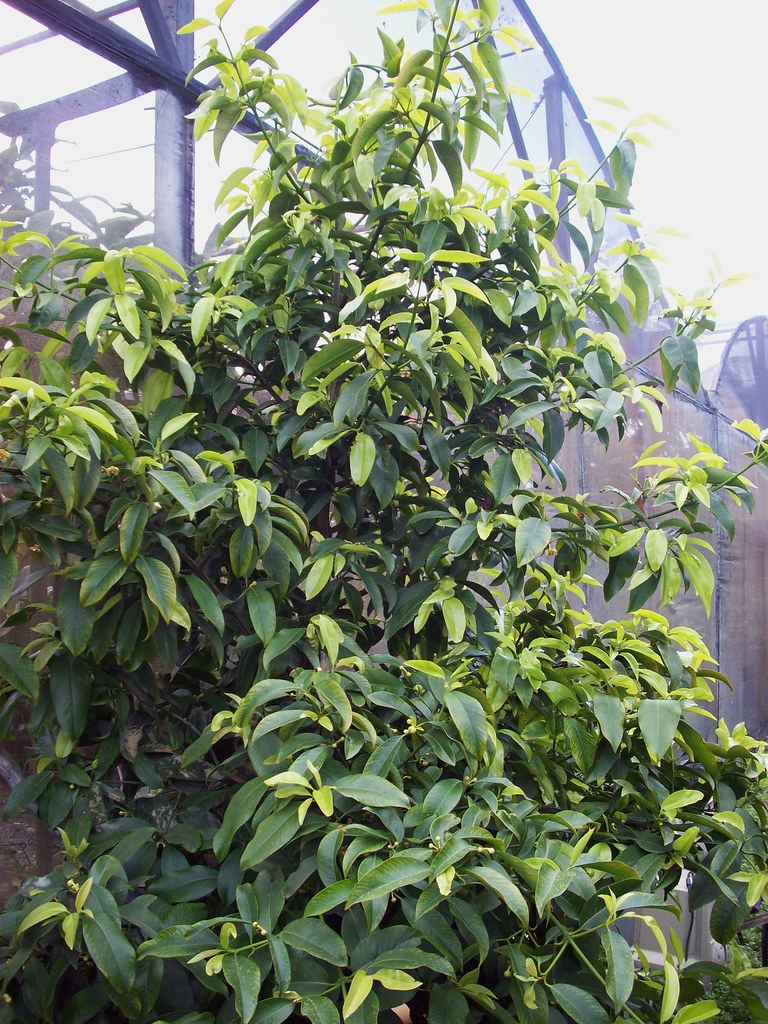I did an earlier post on some of the Garcinia spp. that I'm growing. Here is another species, the tree and flowers are at the RFVC 208 garden and the fruit Murray C. gave me to try. It was tart and delicious. I haven't tasted a Garcinia spp. that I haven't liked yet! I've already planted the four seeds that came from the fruit. I hope every single one germinates. I've also added some new pictures to my earlier post (click on the link above) mainly pictures of the flowers. I wanted to add that there is a lot of confusion on many of the Garcinia spp. and with the small amount of information available it is doubtful that anyone is an expert on Garcinia spp. I spent a whole day making sure I have these properly identified. If you think I've made an error let me know. We only learn through our mistakes. Also, I'll be updating this post as my G. macrophylla seedlings grow and begins to bears it's fruits.
Garcinia macrophylla


Family: Clusiaceae •
Genus: Garcinia •
Species: macrophylla (Mart.) •
Country of Origin: South America •
Synonyms: Garcinia gardneriana, Rheedia benthamiana, Rheedia gardneriana, Rheedia macrophylla •
Common Names: Bacuriparí •
The Bacuriparí is native to the Amazonian lowlands, where it grows as an understory tree. The tree can grow to 30', forming an attractive, pyramidal canopy (Campbell 1983). Trees are propagated by seed and may require 7 to 10 years to come into production. Fruit are variable in shape, averaging 1 1/2" to 2" in diameter and 2" to 2 1/2" in length. The fruit have a thick, hard outer wall containing a bitter latex, as in bacurí. Inside the hard shell is a white, creamy flesh surrounding 3 to 4 large seeds. The flesh is scanty in comparison to Mangosteen or Bacurí. The Bacuriparí is outstanding because it grows and produces a significant crop in shaded conditions (Campbell 1983). The trees are also tolerant of full sun and wind exposure, making them more adaptable to varied climates than the Mangosteen. There is considerable variation in fruit quality among Bacuriparí from different regions of South America, and there may be different species involved.
excerpt from http://www.hort.purdue.edu/newcrop/proceedings1996/V3-431.html#Guttiferae
The tree is native to humid forests of Surinam and Brazil to northern Peru. The fruit is not much esteemed but widely eaten and sold in native markets. The bacuripari was introduced into Florida in 1962 and planted at the Agricultural Research and Education Center in Homestead, at Fairchild Tropical Garden and in several private gardens. One tree fruited in 1970, another in 1972, and the latter has continued to bear. Young specimens have been killed by drops in temperature to 29º to 30º F (-1.67º--1.11º C). Older trees have been little harmed by 27º to 28º F (-2.78º--2.22º C). The tree is accustomed to light-to moderate-shade. Seeds have remained viable for 2 to 3 weeks but require several weeks to germinate.
In Brazil, the tree blooms from August to November and the fruits mature from December to May. In Florida, flowers appear in April and May and a second time in August and September, and the fruits are in season from May to August and again in October and November. Some 15-to 20-year-old trees have produced 100 to 200 fruits when there have been no adverse weather conditions.
excerpt from http://www.hort.purdue.edu/newcrop/morton/bakupari_ars.html

Garcinia spp. part 2 by Eric Bronson is licensed under a Creative Commons Attribution-Noncommercial-No Derivative Works 3.0 United States License.
Based on a work at www.flickr.com




2 comments:
Prior to my gardening days, I was chopping down G. dulcis and forbesii for my chemistry projects to isolate novel chemicals from their trunks. It appears that they are rich in flavenoids, which are anti-oxidants.
Did you like the fruits??
Post a Comment